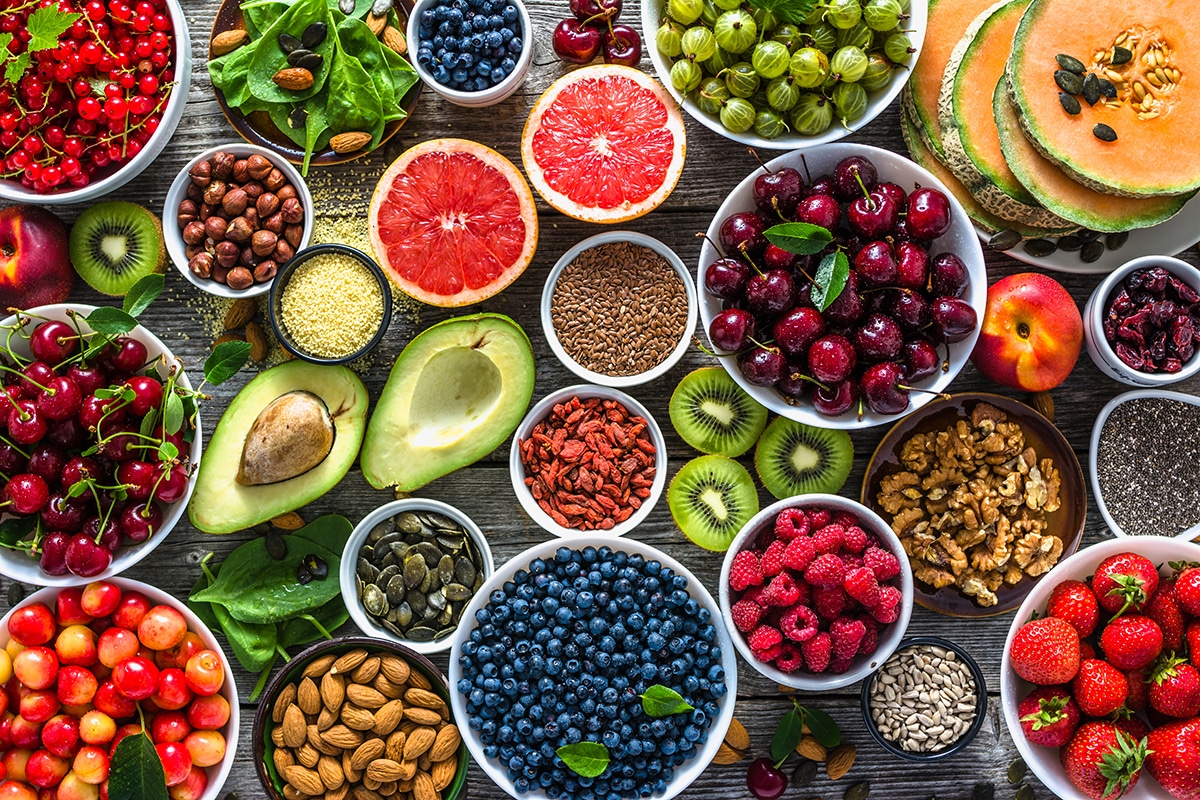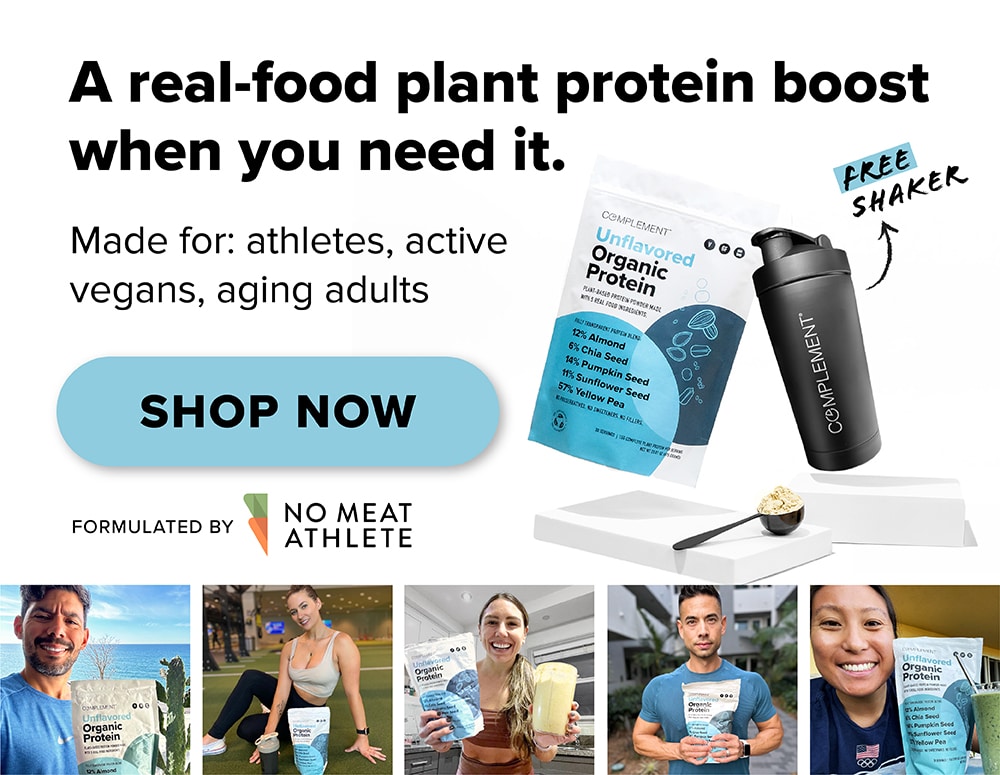
Plant-Based Workout Nutrition 101: What to Eat Before, During, and After Your Workout for Optimal Performance
Of all the plant-based meals during your training, those surrounding your workouts — and the calories you consume during the workout itself — are the most crucial to your success, particularly because they affect your ability to stay energized and strong.
Fortunately, the precepts of optimal workout nutrition are completely consistent with plant-based nutrition for athletes.
(In fact, vegan ultramarathon legend Scott Jurek once pointed out that most people eat a vegan diet anyway while they’re running or working out.)
However, the food that will maximize performance differs significantly from what you should eat on a typical day — most noticeably, the focus shifts toward simple, sugary carbohydrates before and during your workout, and protein-rich foods after for recovery.
The reason is simple; most of the time (when you’re not exercising), you want your body to have to work a little to break down the food you take in. But during a workout you want the opposite: easily-digestible, quick energy sources.
Below I break down workout nutrition into three sections — what to eat before, during, and after your workout. All the advice is for athletes following a plant-based diet, but it’s pretty universal no matter your diet.
What to Eat Before Your Workout
Fueling your workout starts with what you eat before your workout. On tough workout or race days, you should start fueling about four hours before you ever break a sweat.
Here are the two simple rules to follow:
1. Consume carbohydrates and protein in a 3:1 ratio.
The 3:1 ratio is almost universally advocated for optimal absorption of nutrients before a workout. For a big workout, it’s best to eat a large meal three to four hours ahead of time, so that your stomach can be completely rid of the food by the time you start moving, and then eat a small snack of mostly carbohydrate (say, a banana or a few dates) just before the workout begins.
The less time you have until your workout, the smaller your “large” meal should be: if you’ve got an hour or more, thirty grams of carbs and ten grams of protein is great; otherwise, halve the amounts.
2. Include quick-working, high-glycemic carbs for energy now, sustained release (but not necessarily starchy) carbs for energy later.
For example, if you’re making your own pre-workout drink, you might use dates (glucose) as the high-GI, instant-energy sugar, and agave nectar (fructose) for slower energy release.
Why no starchy bagels or bread?
To convert starch into usable sugar requires your body to work, and during a workout, you’d like to use your available energy for movement, not digestion. This guideline applies mainly to workouts that last up to three hours. For longer workouts and events (like an ultramarathon), the intensity becomes low enough that it’s not a problem to consume and digest starchier foods, and you’ll likely find yourself craving them.
If you’re going to eat or fuel during your workout, you can save the simple carbs for mid-workout fuel.
Put it Together: Pre-Workout
Before your toughest or longest workouts, aim to eat one food from each group below, at the appropriate time. For your easier workouts, just one food from the last category will probably be sufficient.
Most importantly: Experiment to discover what works best for you!
2 Hours Before Your Workout
Option 1: Oatmeal (1½ to 2 cups cooked)
- Add fruit, a few nuts or seeds, or a little bit of protein powder to boost the nutrition of this classic pre-workout meal.
Option 2: Toast or Bagel with Nut Butter (1 to 2 slices of toast or ½ to one whole bagel + 1 to 2 tablespoons of nut butter)
- Around a workout is one time when refined, white bread or bagel is more useful than a whole-wheat version with more fiber.
One Hour Before Your Workout
Option 1: White Potatoes or Rice (1 medium potato or 1 cup white rice)
- White potatoes and white rice aren’t great choices for everyday carbohydrates, but before a workout the white carbohydrates become more quickly available and without unnecessary fiber.
Option 2: Apple with Nut Butter (1 apple + 1 tablespoon nut butter)
Less Than an Hour Before Your Workout
Option 1: Fruit
- A medjool date contains around 15 grams of sugar, most of which is glucose and reaches your muscles very quickly. Dates are like nature’s energy gel, so I often consume 2-3 before a hard workout.
- Bananas are another great option, or any sort of high-sugar fruit.
Option 2: Fruit Juice (8 to 12 ounces)
- Tip: add a half scoop of vegan protein powder (about 10g) to get close to the optimal 3:1 carbohydrate-to-protein ratio before a tough workout.

What to Eat During Your Workout
When it comes to mid-workout fueling, I follow one simple rule:
Fuel early and often.
Don’t wait until you’re crashing to refuel, but instead maintain a consistent input of fuel the entire time.
For workouts and races lasting over an hour (and up to 4 or 5 hours), you need 30-60 grams of carbohydrate per hour.
30-60 grams is a commonly-cited figure, but it’s a big range.
More useful might be to divide your body weight in pounds by 4 to get a minimum hourly carbohydrate requirement, in grams. Accomplish this with a homemade sports drink or a combination of energy fuel or fruit and water.
Some believe that a little bit of protein, in a 4:1 carb-to-protein ratio, helps minimize muscle damage, but I focus mostly on easily digestible carbs and let the protein come naturally.
And don’t forget about electrolytes: Aim for about 500 milligrams of sodium with every 16 ounces you drink. This is easy to do if you’re drinking a sports drink or a mix of sports drink and water.
If you’re sticking to mostly water, make sure the other fuel you’re consuming has a dose of electrolytes.
Put it Together: Mid-Workout
If you’re using an energy product like a gel or gummy, pay attention to the nutrient information and recommended servings. Most experts recommend about one serving every 45-60 minutes, which could be stretched further if you combine a sports drink with an editable product.
But it’s also entirely possible (and often recommended) to fuel with whole foods instead of processed energy products. Whole foods can be easier on the stomach, tastier, and more in line with what you’re eating on a daily basis. Not to mention you can get all the same benefits as a formulated product.
Check out this complete guide to fueling your run with whole foods for all the details, but to give you an idea of the best foods for workouts, I’ve put together a chart with my favorite options:
| Food | Serving Size | Calories | Carbohydrates (g) | Sugar (g) | Protein (g) | Fiber (g) |
|---|---|---|---|---|---|---|
| Banana | 1 banana | 105 | 27 | 14.4 | 1.3 | 3.1 |
| Yam, baked | 1 cup | 158 | 37.4 | 0.7 | 2 | 5.3 |
| Raisins | 1 oz | 85 | 22 | 17 | 0.9 | 1 |
| Sweet Potato, baked | 1 cup | 180 | 41.4 | 13 | 4 | 6.6 |
| Medjool Date | 1 date | 66.5 | 18 | 16 | 0.4 | 1.6 |
| Figs | 4 figs | 100 | 26 | 19 | 1 | 4 |
| Coconut Water | 11.1 fl oz | 70 | 18 | 17 | 0 | 0 |
| Cherry Juice | 30 ml | 70 | 19 | 15 | 0 | 0 |
What to Eat After Your Workout
Post workout nutrition is all about two things:
- Timing
- Ratio
Timing is important because following a workout, your muscles are primed and ready to receive fuel to start the repair process. Try to consume your post-workout meal within an hour after your workout has ended.
If you’re jumping in the car (or shower) and don’t have time for a full meal, have a snack or smoothie on hand to eat within that window and save the larger meal for later.
As for ratio, now we’re moving closer to 5:1 carbohydrates to protein. After the toughest workouts or races, consume about 0.75 grams of carbohydrates per pound of bodyweight, and protein accordingly.
A little fat will also do you well. In the post workout meal, I aim for about half as much fat as I have protein.
Put it Together: Post-Workout
For most of us, post workout nutrition comes in the form of a real meal. Maybe that’s a hearty lunch after a morning long run or dinner after a post-work gym session.
The good news is that a lot of standard plant-based meals are pretty close to that 5:1 carb to protein ratio, which makes designing that meal super easy.
But to help with some examples, I put together three simple post-workout recovery meals.
The Simple Formula for Better Workouts and Faster Recovery
There’s a lot of information above, and if you’re new to workout nutrition, it probably feels overwhelming.
But at its core, workout nutrition can be distilled down to the super simple 3-4-5 principle. If you remember nothing else from this post, this simple formula will take you far:
- Before your workout, aim for a 3:1 ratio of carbohydrate to protein.
- During your workout, aim for a 4:1 ratio of carbohydrate to protein.
- After your workout, aim for a 5:1 ratio of carbohydrate to protein (4:1 is okay too).
It’s not about perfection or measuring every ounce of food. Most athletes are successful using the 3-4-5 principle as a guide when making decisions.
Exactly what you eat during each phase depends on your body and needs.
So experiment, adapt, and have fun with it! That’s what health is all about.
But use the damn formula, would ya? 🙂
Leave a Reply
THANK YOU!!!
Thank you ????
This is such a big help. Thank you!
-
What like to know what should a obese woman eat before and after exercise of 90 minutes on a tread mill cross trainer and simple weights
Excellent information. Thank you!




The mid-workout guidance is for up to 4-5 hours. How does the guidance change if it’s 6-8 hours?